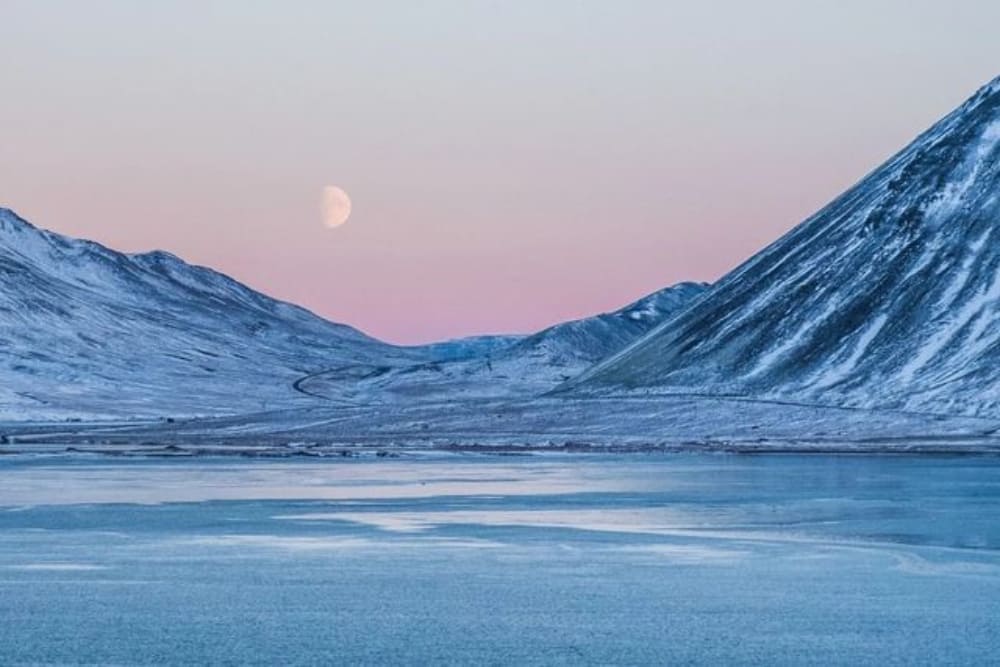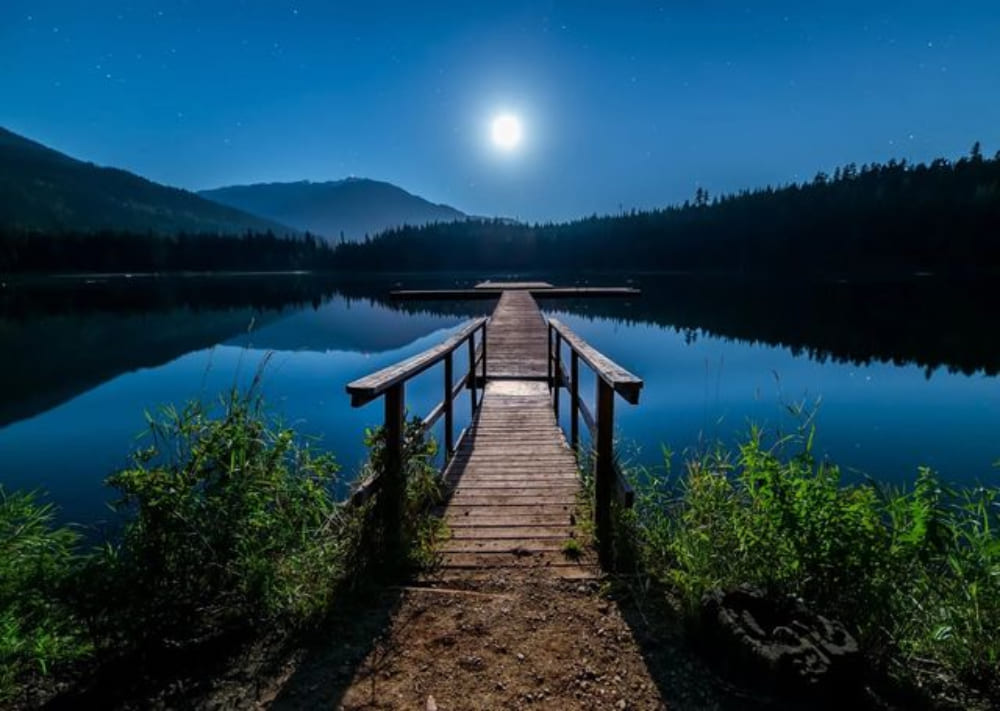7 Expert Tips for Capturing Stunning Moon Photos
Are you one of those dreamers who have spent countless nights gazing up at the star-spangled night sky, your eyes drawn to the ethereal beauty of the moon, wishing to encapsulate that moment into a frame?
If so, you're in good company. The moon, our planet's nearest celestial neighbor, has been stirring the souls of poets, igniting the imagination of artists, and inspiring dreamers for centuries. Yet, the task of taking a striking moon photograph that does justice to its celestial grandeur can be an intricate dance, even for the most seasoned photographers.
But fear not. There's a wealth of tried-and-true techniques at your disposal to help you capture the moon's breathtaking landscapes in all their glory.
In this article, we're eager to guide you on your journey to create stunning moon photos. We'll delve into the world of HDR (High Dynamic Range) imagery and explore the art of long-exposure techniques to give your moon photos the depth and detail they deserve.
In this article, we'll share 7 tips for taking stunning moon photos that will make all your friends envious. So, without further ado, let's embark on this exciting adventure.

In this article, you will learn:
- Pay Attention to Weather and Lunar Phase
- Shoot During the Blue Hour
- Master Long Exposure Techniques
- Incorporate Foreground Objects for Engaging Composition
- Experiment With Wide-Angle and Telephoto Lenses
- Utilize HDR Technology for Optimal Exposure
- Apply Focus Stacking to Maintain Image Clarity
1. Pay Attention to Weather and Lunar Phase
A breathtaking moonlit landscape photograph requires careful planning. While you might be tempted to grab your camera and head out on any given night, it's essential to consider the weather and lunar phase to elevate your work. After all, these factors significantly influence the appearance of the moon in your shot.
Before setting out for your moon photography session, be sure to check the weather forecast. A cloudy sky might obstruct the moon, preventing you from capturing the desired image. However, don't be discouraged if some clouds are predicted.
Skillfully incorporating clouds can add tension and a sense of mystery to your composition, although it requires patience. You typically need to wait until the moon is partially or entirely visible for the best results.
Understanding the lunar phase timetable is also crucial. Full moons often offer the best opportunities as they display all of the moon's brilliance. However, don't underestimate the charm of crescent moons. These subtle lunar phases provide unique artistic possibilities, enabling you to capture the breathtaking beauty of the moon.
Check out the video (made by timeanddate) below to learn about the different phases of the moon.
2. Shoot During the Blue Hour
The blue hour, that enchanting period roughly an hour before sunrise and after sunset, can take your moon landscape photography to a new level. As the sun dips below the horizon, the sky transforms into a canvas of blues, purples, and pinks, creating a stunning backdrop when combined with the warm, bright moon.
The blue hour offers many advantages for capturing awe-inspiring moonlit landscapes. The soft diffused light gently illuminates the entire scene, enhancing the mysterious atmosphere and adding a captivating touch.
Shooting during the blue hour also allows you to incorporate foreground elements of the landscape while capturing the moon, achieving a subtle balance in your frame. During this period, the ambient light typically provides sufficient illumination to highlight the fine details of the landscape without the need for long exposure times.
To make the most of this magical hour, careful planning is vital. Determine the sunrise or sunset times for your location, arrive early to set up your equipment and compose your shots, and take advantage of the soft hues and the moon's interplay with the sky by trying different compositions.

3. Master Long Exposure Techniques
Since the moon is only visible during the darkest hours of the day, longer shutter speeds are necessary to ensure adequately bright images. Therefore, mastering long exposure techniques is vital for capturing clear moonlit landscapes.
Investing in a sturdy tripod is essential. It provides the stability required to keep the camera steady during long exposures. To minimize potential camera shake, consider using a remote shutter release or the camera's self-timer.
Camera lens and shutter vibrations can also impact image clarity. If you're using a DSLR, you can mitigate these vibrations by using mirror lock-up mode or live view mode. For any type of camera, enabling the electronic shutter or electronic front curtain shutter is a good option.
Constantly monitoring weather conditions is also crucial. Windy conditions can cause unnecessary camera shake, so wait for relatively calm moments to shoot. If possible, shoot multiple images as backup in case any vibrations affect image quality.
Although you need to set a longer shutter speed to get well-exposed photos, ensure that the duration isn't excessive. Due to the Earth's rotation, the moon moves across the sky, and if not careful, this could result in blurred images.

4. Incorporate Foreground Objects for Engaging Composition
When aiming to capture breathtaking photos of the lunar landscape, the moon is undeniably the focal point. However, to create truly memorable images, integrating a foreground element that complements the overall composition is crucial.
By merging foreground elements with distant features like mountains, trees, or beach textures, you can add depth and visual intrigue to your photos, immersing viewers in the complete scene.
When choosing your foreground, look for elements that resonate with the moon's mystical aura. Consider how the moon interacts with these elements and their interrelationships within the frame. Such interplay can craft a visual narrative that draws viewers in, inviting them to explore the entire composition.
Remember, creating an engaging composition hinges on balancing the relationship between the moon and the foreground. Be patient, explore different locations and viewpoints, and even minor compositional changes can dramatically enhance the image.

5. Experiment With Wide-Angle and Telephoto Lenses
While wide-angle lenses are often the go-to for landscape photographers, don't overlook the creative possibilities offered by telephoto lenses.
Wide-angle lenses are great for encapsulating expansive scenes and incorporating vast landscapes into your frame. By carefully composing and balancing the proportions of near and far elements, you can create photos that convey depth and engage the audience.
However, don't confine yourself to wide-angle lenses. Experimenting with telephoto lenses can yield unique and attention-grabbing results. By focusing on the foreground and magnifying an element—like a majestic tree or solitary cactus—while positioning the moon in the backdrop, you can capture a captivating image.
Remember, each lens has its unique creative potential. By exploring the possibilities of wide-angle and telephoto lenses, you can expand your photographic skills to produce unforgettable lunar landscapes.

6. Utilize HDR Technology for Optimal Exposure
Achieving good exposure when photographing lunar landscapes can be challenging for many, given the stark contrast between the bright moon and the dark foreground. This is where High Dynamic Range (HDR) technology comes in, helping you capture the full brightness range of the scene and create stunning effects.
To create an HDR image, you need to take multiple exposures of the same thing. You need to take at least three exposures - one that is underexposed, one that is properly exposed, and one that is overexposed.
Then, you use HDR software to merge these exposures into a single image, combining all of the tonal ranges between the three exposures. This gives each pixel in the image more information to work with.
Once you've taken the necessary photos, import them into post-processing software like Lightroom. Then blend the images, combining a well-exposed foreground with a richly detailed moon!
Alternatively, if you're not inclined to use HDR, you can embrace overexposure in scenes with a bright moon against a dark environment. Try setting the exposure for the landscape, allowing the moon to appear very bright or even white. The results can be hit or miss, but when successful, the effect can be quite visually pleasing.
Here is a YouTube video (made by The School of Photography) about how to create HDR in Lightroom.
7. Apply Focus Stacking to Maintain Image Clarity
When photographing lunar landscapes, ensuring sharpness across the entire image can be challenging, especially when using telephoto lenses, large apertures, or including near foreground elements. Luckily, there's a clever solution: focus stacking.
This technique involves taking multiple photos with different focus points and merging them during post-processing. This way, you can have a photo with both the moon and the foreground environment in sharp detail.
Focus stacking can be combined with other techniques, like HDR blending. This complex process involves taking multiple photos with different exposures—some focused on the landscape and others on the moon. Then, you can merge all the images in your preferred post-processing software!
When post-processing your moon photos in Lightroom or Photoshop, you may find yourself frequently adjusting various parameters such as exposure, contrast, and color balance. Doing this with just a keyboard or mouse can be cumbersome and inconvenient. That's where TourBox comes in!

TourBox is a powerful editing tool that allows photographers to adjust these parameters quickly and easily using a physical console. With TourBox, you can fine-tune your edits with precision and speed, making the post-processing stage of your moon photography workflow a breeze.